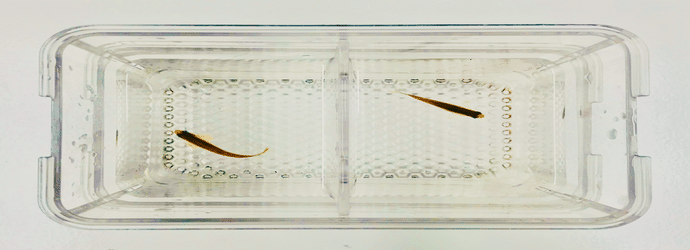How do bacterial pathogens enter eukaryotic cells? By what mechanisms can some bacteria avoid being killed after phagocytosis? Which host cell proteins interact with bacterial virulence factors, and what happens if one or the other partner is missing? Perhaps unsurprisingly, one of the best ways to investigate bacterial virulence is to infect eukaryotic cells. On purpose!
This requires a juxtaposition of two types of sterile techniques: eukaryotic and microbiological. One moment you’re in the tissue culture room carefully preparing your host cells for a (probable) protracted and interesting death, and the next you’re at the Bunsen burner diligently flaming tubes and bottles to prepare an overnight bacterial culture to invade your cells. There will probably be a costume change in the middle as you go from the tissue culture lab-coat to the bacterial one.
Since infections are busy protocols and can take a few days to perform, it is worth putting in the time upfront to strategize. There’s a lot one needs to consider when planning an experiment, and hopefully, these points will help you in designing and executing the perfect bacterial infection.
1. Know the Growth Dynamics and Properties of Your Bacteria
To calculate how much bacteria to add to your eukaryotic cells in order to get a particular multiplicity of infection (MOI), [1] you’ll need to measure their concentration. This is typically done by measuring optical density at 600nm, so find out the cell density corresponding to 1 OD600 for your bacterial species.
Know the phenotypic features and typical growth rate of your bacteria to detect signs of cross-contamination. If your bacteria are typically yellow and slow-growing, a white pellet and rapid growth rate likely indicate a contaminated culture. Disappointing, but at least you’ll know before going through the whole protocol.
Refresh overnight bacterial cultures to make sure they are in the log phase at the time of infection, so knowing the growth rate will help you determine a good dilution for the day of infection. This will enable you to optimize so you can get a log-phase culture in a timely manner, and better predict your experiment’s duration.
2. Plan Bacterial Preps
Set up overnight bacterial cultures in duplicate to help you avoid disappointment on infection day since sometimes an overnight culture doesn’t grow quickly. It would be frustrating to have eukaryotic cells ready and no bacteria to infect them with. Be mindful of the antibiotics you use – they can be necessary to select for a plasmid with useful features (like a fluorescent marker), but may stress the bacteria and hence influence interaction with eukaryotic cells. Each bacterial species is different, but usually, it would be better not to use antibiotics, unless you need to select for a plasmid.
3. Prepare the Eukaryotic Cells
Some types of eukaryotic cells require pre-treatment or differentiation steps and hence, need to be prepared a few days before infection. Consider how many cells you will need to seed (and know whether they divide) in order to ensure you have the right number for a reproducible MOI. If the cells are cultured in antibiotics, replace the media with antibiotic-free media before infection. If you ordinarily add antimycotics or other additives to your cell culture media, try to find out if these are likely to influence the infection. If in doubt, it may be better to leave it out. The presence of fetal bovine serum could also affect your experiment, because of batch variation, so be sure to set up an experiment you can reproduce by eliminating unnecessary variables and keeping track of reagent lot numbers if need be.
4. Consider Your Controls
Consider what controls will be necessary for your downstream analysis. It is often desirable to have a heat- or UV-inactivated bacterial infection condition alongside your test condition to check if bacterial viability is necessary for host cell responses. You will need to optimize the time and mode of bacterial killing. Inactivating too long will make for incommensurable samples, as the bacteria will lyse, making it impossible to infect live and “dead” conditions with equivalent MOI.
Depending on the experiment it may be possible to have a positive control. If you’re looking at inflammatory responses to various bacterial strains, this could be a strain or mediators (e.g. combination of lipopolysaccharide and nigericin) previously shown to cause inflammation.
5. Keep Track: The Day of Infection
Get your refresher bacteria culture going early in the day to reach log-phase growth. If necessary, make sure to replace the media on your eukaryotic cells with antibiotic-free media at least an hour before the infection. Remember to turn on the heating block (if needed) to prepare the inactivated controls.
Pellet and re-suspend log-phase bacteria in warmed tissue culture media a few times. This serves to wash away culture supernatant and any accumulated secreted molecules. Re-suspending also means the bacteria are suspended in the same type of media as your cells. Depending on what is known about your bacteria, it could be worthwhile to run an additional experiment to evaluate whether there are secreted toxins in the culture supernatant by filtering out any remaining bacteria and using the supernatant at the infection stage.
Take your OD600 readings to determine bacterial concentration. Have the necessary formulae ready to calculate the volume of bacteria you need for a particular MOI. Label a tube for each treatment and keep close to the Bunsen burner flame as you dilute your bacteria/mediator in the appropriate volume of media for each condition, following bacteriological sterile technique.
Set up your paraphernalia in the dedicated infection tissue culture cabinet. The same standards of sterility you’d use for your typical tissue culture cabinet apply. Make sure you have enough tips and pipettes to treat each well/dish individually.
It’s time to get your prepared host cells from their incubator and introduce them to the bacteria. Make sure you follow the appropriate aseptic protocols for your lab to avoid contamination as you bring the bacteria and cells to the infection cabinet. Carefully aspirate the media from your cells, and add the bacterial treatment, one well at a time.
Centrifuge your plates of cells gently after infecting, to synchronize the moment of bacteria and eukaryotic cell contact. For most cells, centrifuging for 5 minutes at 200g works. Place the plates in a dedicated incubator and let the bacteria do their thing.
6. Analyze the Infection
An infection could last a few hours to a day, depending on the type of bacteria. Some take a while to secrete effectors. It could be useful to take samples of the culture media at certain time-points during infection if, for example, you’re evaluating cytokine levels, or lactate dehydrogenase release (a common assay to evaluate eukaryotic cell death). These experiments can be especially revealing if you compare bacteria lacking a virulence factor to wildtype. If you’re interested in changes in host protein expression or transcription, analysis by immunoblotting or qPCR won’t be much affected by the bacteria. Even if you infect with a high MOI and the bacteria divide rapidly, eukaryotic cell components will still likely comprise the majority of the lysate. If your bacteria are fluorescently-labeled, you could prepare infected cells at various time-points and microscopically track whether they influence endosomal maturation by evaluating their colocalization with early/late endosomal or phagosomal markers.
Whatever your mode of analysis, the infection of cells still remains the most crucial part of your experiment. Follow this primer for planning your perfect infections and get answers to a whole lot of interesting questions. May your purposeful infections be productive.
Got any tips of your own? Leave them in the comments below.
References:
- Wikipedia. Multiplicity of infection. Accessed 1 July 2020.





